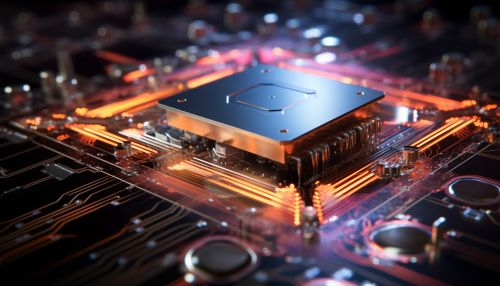The Physics of Quantum Computing with Superconducting Qubits
Introduction
Quantum computing is a rapidly evolving field that leverages the principles of quantum mechanics to process information. One of the most promising technologies in this area is the use of superconducting qubits, which are tiny circuits made out of superconducting materials that can exist in multiple states simultaneously, thanks to the phenomenon of quantum superposition.


Quantum Mechanics and Quantum Computing
Quantum mechanics is the branch of physics that deals with the smallest particles in the universe, such as atoms and subatomic particles like electrons and photons. It is characterized by principles that are quite different from those of classical physics. One of these principles is the aforementioned quantum superposition, which allows particles to exist in multiple states at once. Another is quantum entanglement, which allows particles to be instantaneously connected, regardless of the distance between them.
In the context of computing, these principles enable quantum computers to process a vast number of possibilities simultaneously and to perform complex calculations at speeds that are currently unattainable by classical computers. The basic unit of quantum information is the qubit, which, unlike the binary bits of classical computing that can be either 0 or 1, can be both 0 and 1 at the same time thanks to superposition.
Superconducting Qubits
Superconducting qubits are a type of qubit that are made from circuits of superconducting materials. These materials, when cooled to extremely low temperatures, exhibit zero electrical resistance, meaning that current can flow through them without any loss of energy. This property makes them ideal for use in quantum computing, where the preservation of quantum states is crucial.
There are several types of superconducting qubits, including charge qubits, flux qubits, and phase qubits. Each type has its own advantages and disadvantages, and the choice of which to use depends on the specific requirements of the quantum computing system.
Quantum Computing with Superconducting Qubits
Quantum computing with superconducting qubits involves manipulating these qubits to perform quantum computations. This is typically done by applying microwave pulses to the qubits, which can put them into a superposition of states, change their state, or entangle them with other qubits.
The process of quantum computing involves initializing the qubits into a certain state, applying a series of quantum gates to manipulate the qubits and perform the computation, and then measuring the qubits to obtain the result. The result of a quantum computation is probabilistic, meaning that it gives the probability of each possible outcome.
Challenges and Future Directions
Despite the promise of superconducting qubits for quantum computing, there are many challenges that need to be overcome. One of the main challenges is the issue of quantum decoherence, which is the loss of quantum information due to interaction with the environment. This is a major obstacle to the development of practical quantum computers, as it limits the time during which quantum computations can be performed.
Another challenge is the difficulty of scaling up quantum computers. While it is relatively straightforward to build a quantum computer with a few qubits, it is much more difficult to build a quantum computer with the thousands or millions of qubits that would be needed for practical applications.
Despite these challenges, the field of quantum computing with superconducting qubits is advancing rapidly, with many exciting developments on the horizon. With continued research and development, it is hoped that these challenges can be overcome, paving the way for the realization of practical quantum computers.
